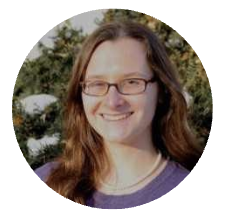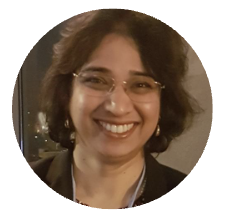Stories connect us, and who tells them matters – this is especially true when it comes to the story of our heating planet. This is why philanthropy’s support of climate research and journalism is such an important tool for climate action.
In a global conversation, Alliance brought together expert journalists covering climate change, as well as the funders who make supporting climate research and media a core part of their strategy.
Moderated by our Digital Editor, Elika Roohi, the panel included:
- Sven Egenter, Editor-in-Chief and Executive Director, Clean Energy Wire
- Mikaela Weisse, Deputy Director, Global Forest Watch, World Resources Institute (WRI)
- Aarti Khosla, Founder and Director, Climate Trends
A few highlights from the event:
 Sven said: For the energy transition and the move to climate neutrality, fifty per cent of the road ahead hinges on communication, because there are so many stakeholders involved. Journalism is clearly in that category.. so what have we achieved so far?
Sven said: For the energy transition and the move to climate neutrality, fifty per cent of the road ahead hinges on communication, because there are so many stakeholders involved. Journalism is clearly in that category.. so what have we achieved so far?
- [Clean Energy Wire] has created a baseline on climate and energy reporting on the subjects we cover, to help journalists get faster into the story
- We created this community through the capacity building of now over 1,500 journalists from across the globe
- We are now in talks with other media about how to do it properly – a very welcome side effect from our work!
We’ve been immensely fortunate in that we have two core funders: the Mercator Foundation out of Germany, and the European Climate Foundation. Mercator funds 80% of our 1.3 million euro annual budget. What has been really unique is the long-term commitment those two have put into our project right from the start – with a starting grant of 3.5 years. That has given us space to build our brand, our reputation, to test and to dismiss things. That has been really important.
 Mikaela: WRI is a global research organisation working at the intersection of climate, nature and people. Data is really at the heart of what we do; our model is:
Mikaela: WRI is a global research organisation working at the intersection of climate, nature and people. Data is really at the heart of what we do; our model is:
- Count it: Really recognising that we need to understand the extent of the problem before we can even get started – and data and research is really at the heart of that
- Change it: Making use of that information to move the needle in the way that we want to see in the world
- Scale it: Not just have impact in individual locations, but to actually be able to replicate that around the world
[Our data platforms mean] that everything is publically available online, for free, so that anyone in the world can access this information at any time. It’s democratising and opening up information that might previously have been in a PDF report from some a government agency or international organisation.
 Aarti: Climate Trends started about six years ago. The reason we created a start-up to communicate about climate change in India was… while on the one hand you can always say that there are development challenges on health, gender, [or] education and [so] climate does not take precedence, at the same time they are so intersecting. Climate policy can influence every other policy… and we felt a better way to engage with some of the influencers in our defined target audience would be to set some principles about how we communicate about climate change in the first place.
Aarti: Climate Trends started about six years ago. The reason we created a start-up to communicate about climate change in India was… while on the one hand you can always say that there are development challenges on health, gender, [or] education and [so] climate does not take precedence, at the same time they are so intersecting. Climate policy can influence every other policy… and we felt a better way to engage with some of the influencers in our defined target audience would be to set some principles about how we communicate about climate change in the first place.
It’s quite important to understand in that context how India is the most populous country, a very large economy, also quite a big contributor to global emissions and yet quite cognisant of the fact that individual emissions are quite low, and there is still a long way to go where prosperity can meet a large part of the population.
The kind of stuff we do now is creating a climate lexicon. [To give you an example of] the way communication and media is consumed in India – the top ten newspapers of the country are not in English. This means when you talk to people there is a certain way to communicate about climate change. We’ve made a very small attempt, but recently in two regional languages which are spoken by more than 50 million people, we’ve created what climate change terminologies mean in the regional languages. We hope that through creating local language phrases and words which make sense to journalists who are reporting on the issue locally, or reporting on extreme weather events that are happening in that city/town/district/state, it allows for greater discussion of a topic which is otherwise just relegated to an English newspaper.
You can watch the full recording of the event here:
Our next event takes place in June on New giving vehicles and tools. Make sure you are subscribed to our mailing list to receive an invite to all future events!
Amy McGoldrick is the Head of Marketing, Advertising and Events



Comments (1)
Dear Sven, Mikaela & Aarti, Your work is valuable. Unfortunately I could not attend the live session. However the conference report is informative. I hope you will further expand your horizons, to consider coastal cities and rising sea levels. Exposed coastal cities will not survive 20-80cms of rising sea levels. Are some of your 1,500 journalists writing about this? Do Coastal City citizens need more data to understand the threats to human security from oceans on the rise? Do rising sea levels pay attention to gender when they invade the land? If the answer to these questions is no, is it not time to do something about it? Is it not time to also direct your telescope looking into the future away from energy and towards water? To how invading seas and climate pays no attention to identity markers? NASA expects the lunar cycle to exacerbate high tides in the 2030s. For low lying regions this could be important. Who in New York, Mumbai, Osaka, Amsterdam, Naples, Brisbane, Melbourne and so on is writing about this? Artists need to lead on this matter.